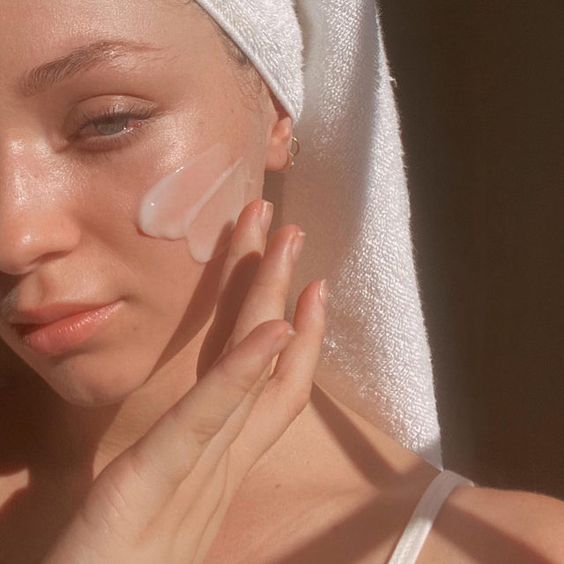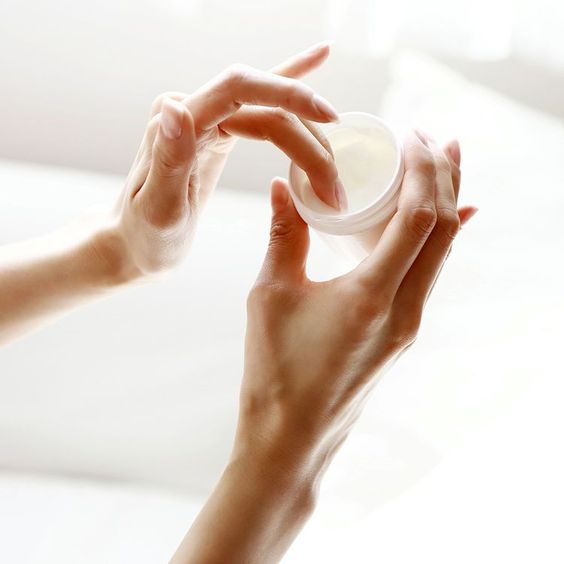If you struggle with persistent breakouts or acne, you’ve probably tried almost every product with the hope to fight off your blemishes and once again getting back your skin. Several popular skincare ingredients are swashed for their “miracle acne-curing” properties. Anybody, even those who don’t have much time looking into skincare at all, have probably once heard of these ingredients like Salicylic Acid, Benzoyl Peroxide.
In recent years, with the rise of social media, you may try any popular skincare ingredients to cure your acne. However, it may work for one person doesn’t mean that it will work for you. It seems like you are doing an endless search to find the right one. When you think that you might have tried every product that is available on the drugstore aisles, it is hard to just continue chasing. But don’t give up! Because there’s a solution out there waiting for you. And that happens to be Hyaluronic Acid!
What is Hyaluronic Acid?

Hyaluronic Acid is a naturally occurring substance in your body, like many popular skincare ingredients. It plays an important role in your skin structure and keeps your skin well-lubricated and hydrated.
Not only is Hyaluronic Acid potentially vital when it comes to keeping you looking young, but it’s also a good ingredient for hydration. Using Hyaluronic Acid after applying another product on your face might help it absorb better. If HA sounds familiar to you, it’s probably because it can hold as much as 1000x its weight in water so a lot of products made for heavy-duty hydration make use of that fact.
In the skin, Hyaluronic Acid is present in the extracellular matrix and helps to retain skin hydration by binding to water molecules. As we age, our bodies produce less hyaluronic acid, which can lead to drier and more sagging skin.
In addition to its role in keeping tissues hydrated, Hyaluronic Acid also helps when healing wounds and tissue repair. It has been proven to have anti-inflammatory and antioxidant properties that can help to protect cells from damage caused by free radicals.
Hyaluronic Acid Benefits
Hyaluronic acid is popular for its incredible benefits in skincare products, including its ability to hydrate and plump the skin. It works by attracting and retaining water molecules, which helps to moisturize the skin. This also makes the skin look more supple, firm, and youthful-looking.

Some of the key benefits of hyaluronic acid for the skin include:
- Hydration: Hyaluronic acid has an excellent ability to hold up to 1,000 times its weight in water, making it a marvelous hydrating agent for the skin. It can help to replenish the skin’s moisture barrier, which is essential for maintaining healthy, youthful-looking skin.
- Anti-aging: As years pass, our skin loses moisture, elasticity, and volume, which can form wrinkles, fine lines, and sagging skin. Using Hyaluronic acid can help to restore moisture and volume to the skin, which can lead to a glossier and younger look.
- Improved skin texture: When your skin is hydrated enough, it will have a smoother and softer texture, making it easier to apply makeup. And Hyaluronic acid can help with that as it provides the skin with the moisture it needs to appear smooth and supple.
- Reduced appearance of pores: Pores appear when the skin is lacking hydration. And the more dehydrated skin is, the larger and more noticeable pores get. Hyaluronic acid can easily solve the problem. It decreases the appearance of pores by providing the skin with enough hydration to look smoother and more refined.
- Hyaluronic Acid for acne scars: Hyaluronic acid may help reduce the appearance of blemish scars lingering on your face for years. Acne scars can be caused by inflammation that damages the collagen in the skin, resulting in pitted or raised scars. Hyaluronic acid can help to fill out and plump up the skin, which can reduce pitted scars. Additionally, it can help to improve the texture and skin tone, which can also reduce the visibility of acne scars
Is Hyaluronic Acid Good for Oily Acne-Prone Skin?
While hyaluronic acid sounds miraculous with its extraordinary advertisements on every social platform, there is no proof that this particular acid can cure acne. Yet, it is needed in a skincare routine for oily acne-prone skin, as the skin needs to be hydrated every day for better results, even the oiliest one.

Hyaluronic acid serums alone can’t be an acne treatment product, and hyaluronic acid won’t eliminate wrinkles from your face. Instead, hyaluronic acid helps your skin retain moisture as it is important for oily skin to maintain healthy and moisturized skin. When the skin is dehydrated, it would produce more oil, which may cause pores to be clogged and breakouts.
Aside from using HA, you should use other acne ingredients for maximum effectiveness. Keep in mind to use a non-comedogenic moisturizer to prevent further clogging of pores.
Which Acid is Best for Acne?
When it comes to acid, you may think about some scary experiments related to burning. However, if you choose the right one with the right dose, it may be magic to your skin.
Acid has been widely used to treat acne, wrinkles, and scarring. However, not every acid is good for acne-prone skin. We have listed some that are the best for acne, remember that this is just for reference.
- Salicylic Acid.
Salicylic acid has been popular for a long time in the world of skincare. It’s used to exfoliate the skin and keep pores clear, which helps reduce hidden acne. It appears in any serums and cleansers at concentrations between 0.5 and 2%. There is also much professional advice to use Salicylic Acid when curing acne.

- Glycolic Acid

Glycolic acid is the most popular alpha-hydroxy acid (AHA) used in skin care. It is the smallest AHA that comes from sugar cane. AHA is used in many products due to its ability to get into the skin easily. It’s very effective at removing dead skin, reducing blemish scars, preventing acne, fading dark spots, and toning up. Glycolic acid is a fantastic anti-aging agent that seems to do it all.
- Hyaluronic Acid

The benefits of this acid have been mentioned above, so in this section, we will list the best hyaluronic acid serums. Among all serums available on the market, we highly recommend the ordinary hyaluronic acid. It is the most popular serum among those containing HA, which has been used and received several good feedback. You may want to try it once.
Ending
Hyaluronic Acid is a skincare ingredient that is popular for its extraordinary ability. It can be the savior for those who struggle with acne, scarring, or dark spots on the face and uneven skin. Nowadays, many skincare products contain this agent, remember to double-check before adding it to your cart. Anyway, Hyaluronic Acid is worth a try so don’t be hesitant, let’s go get one!




